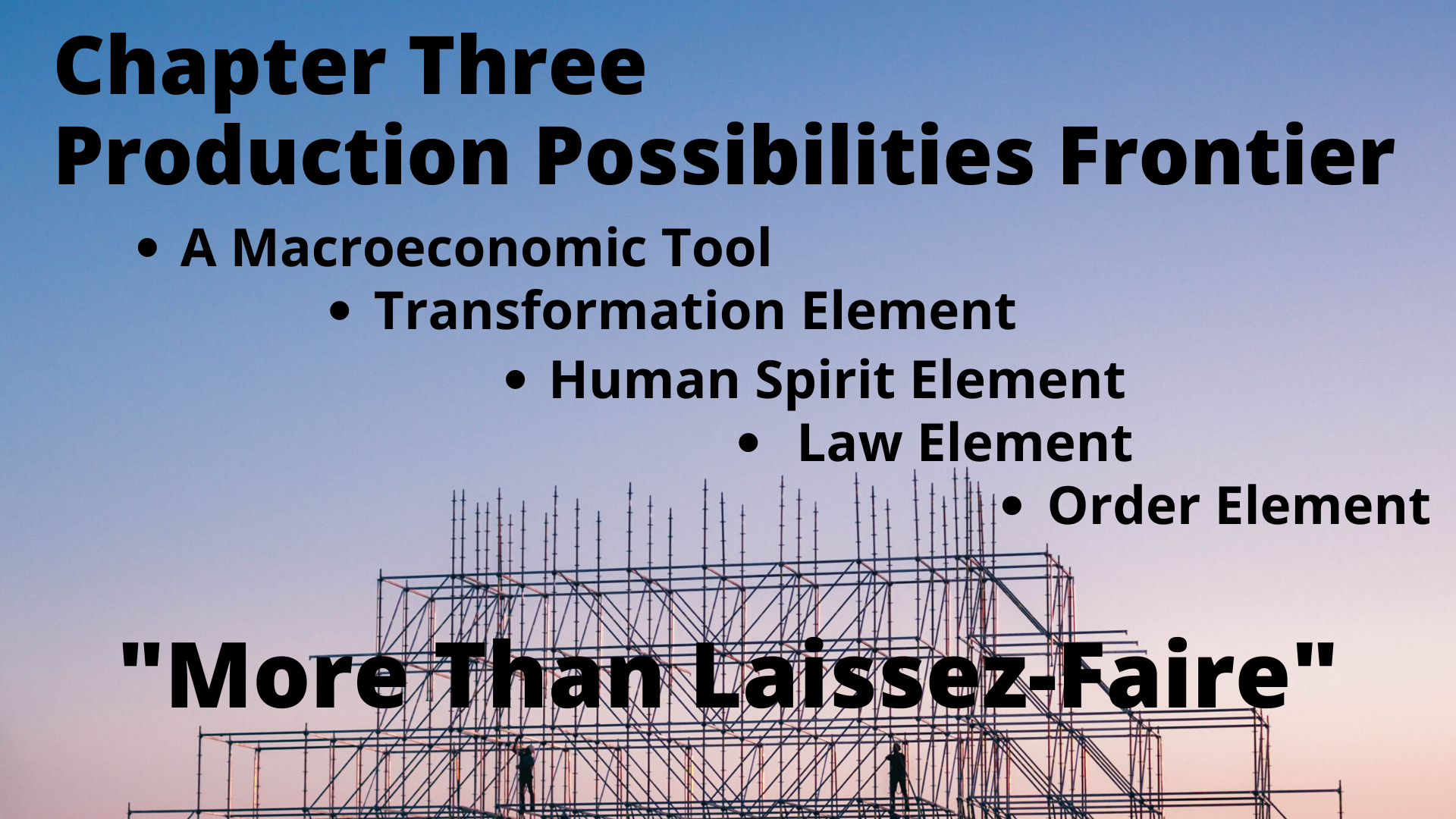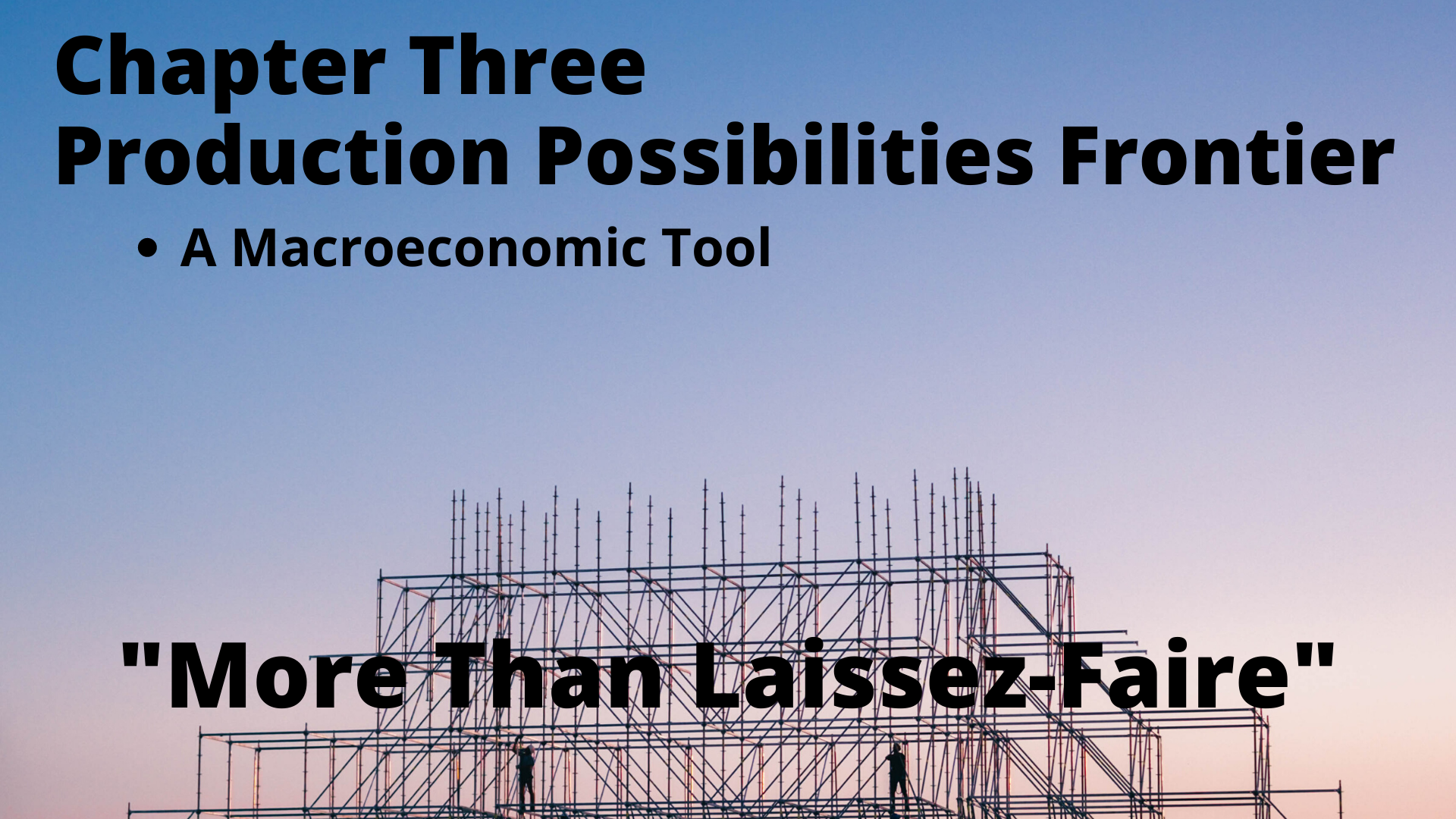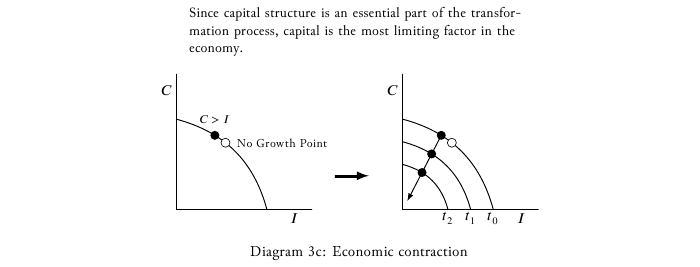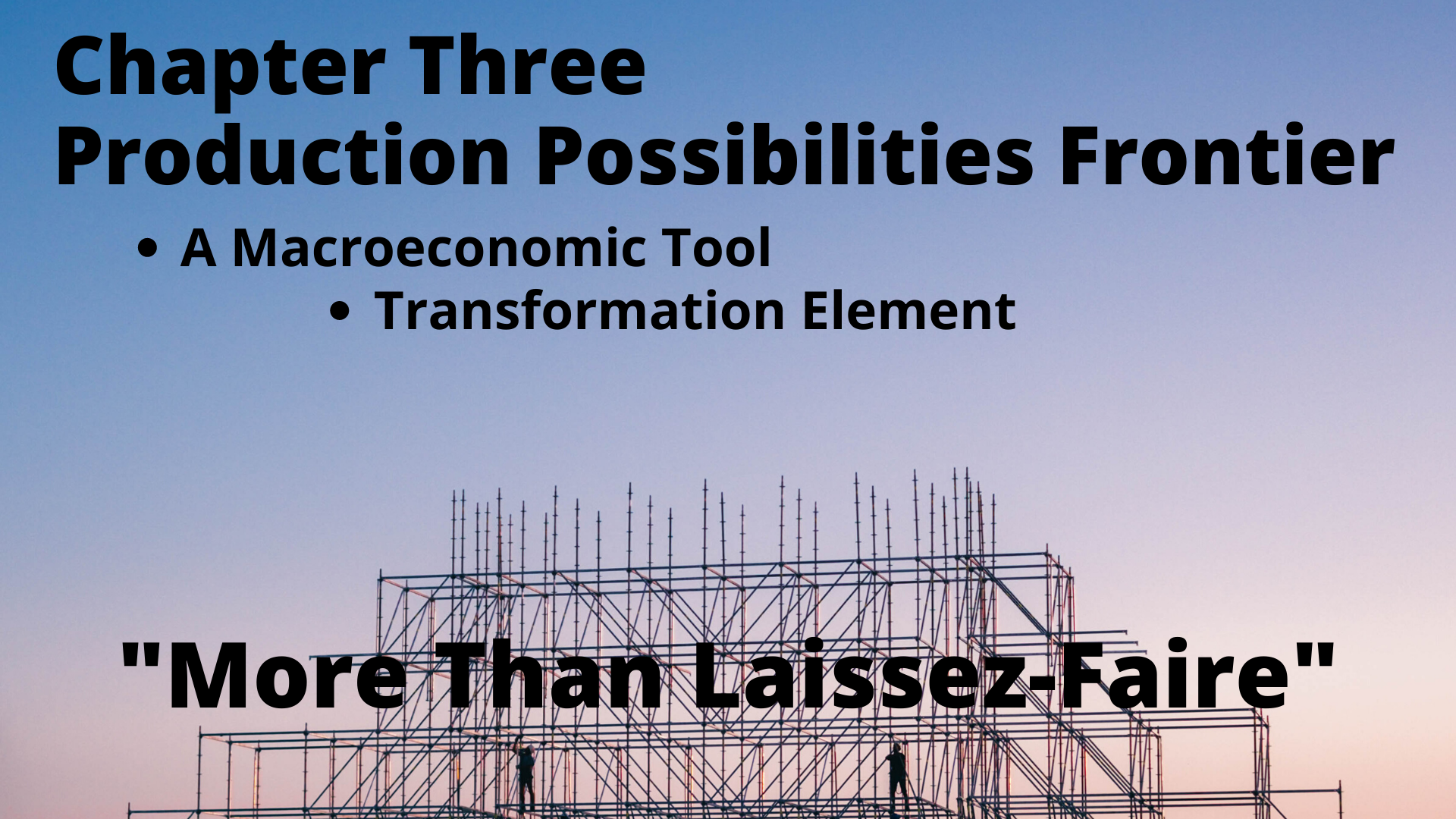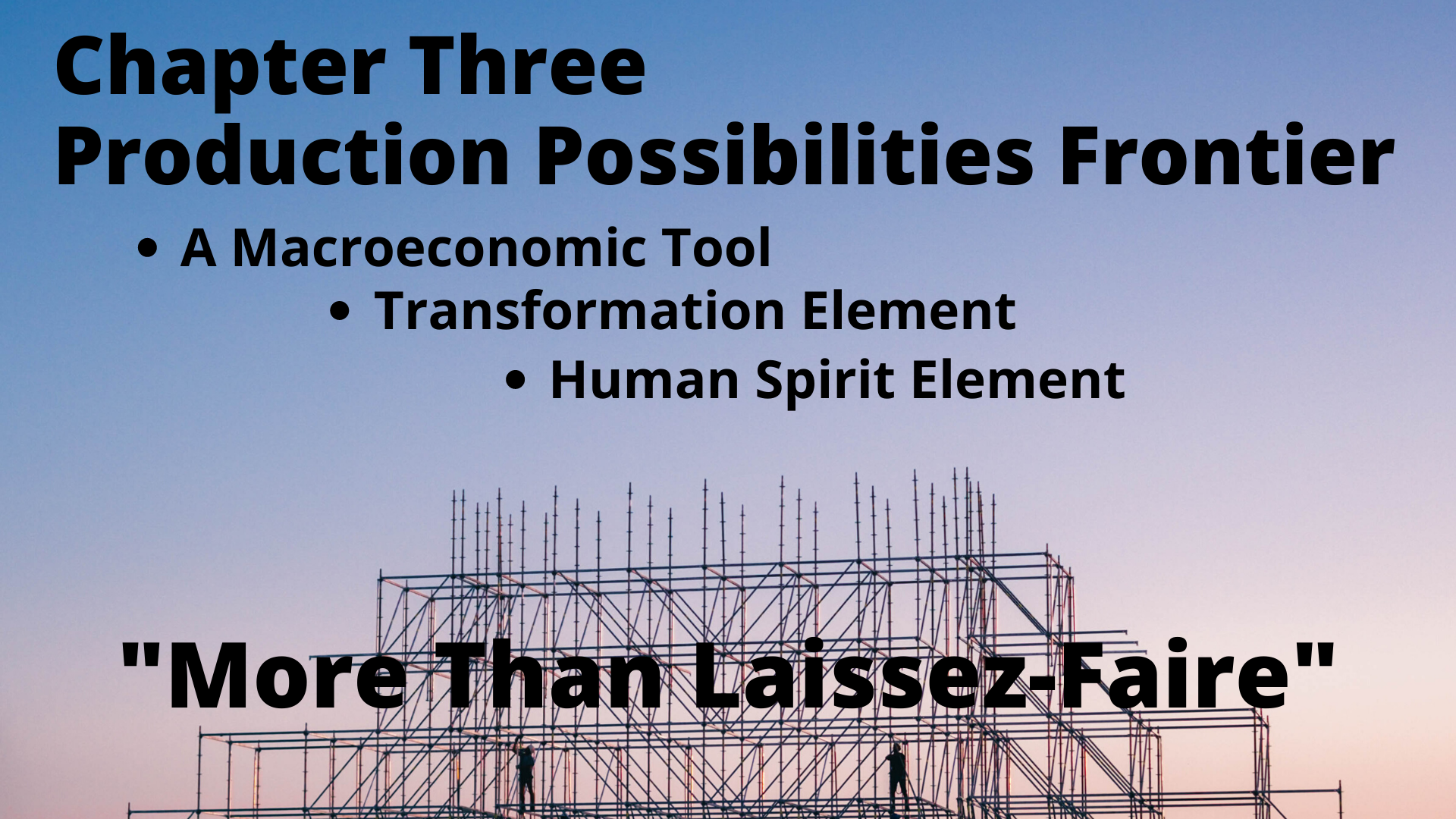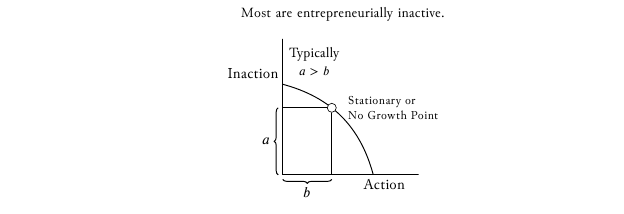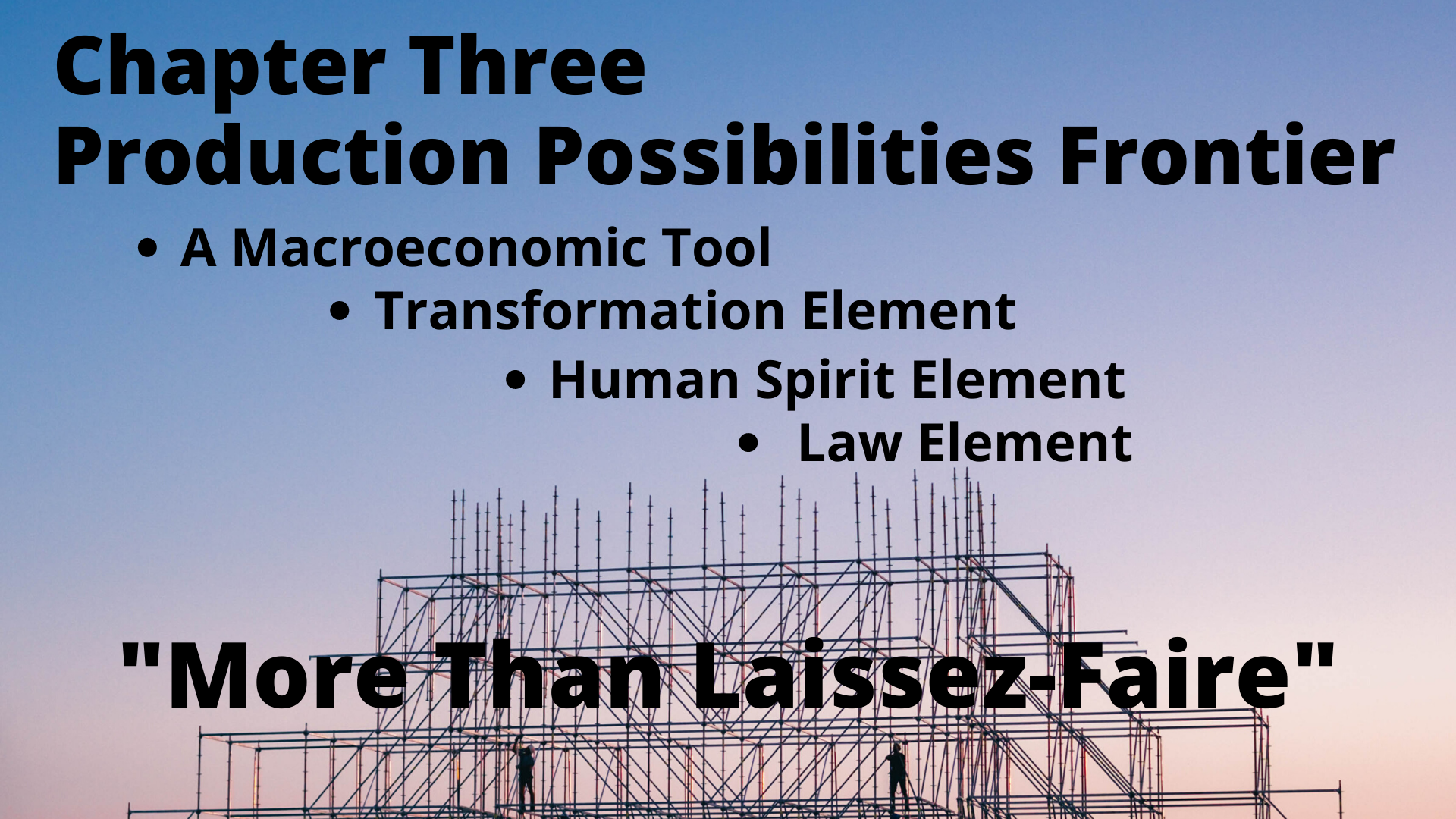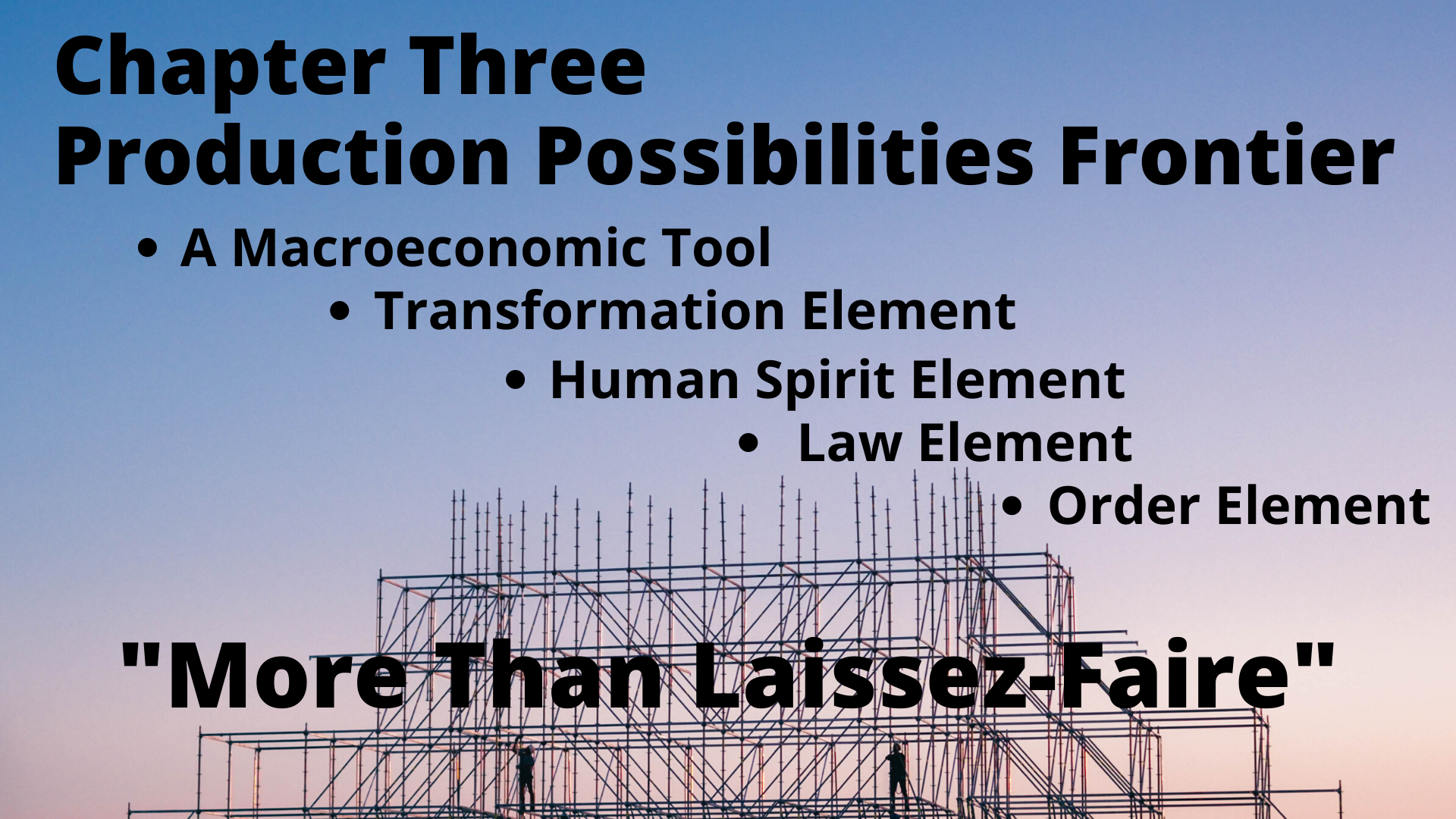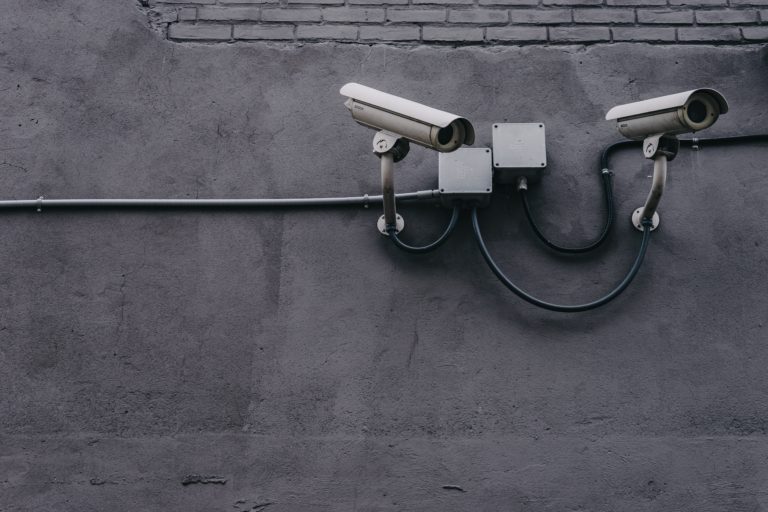You are about to venture into new and expanded Production Possibilities Frontiers yet as we go along it will make perfect sense since we will start with the standard production possibilities frontier and go from there.
Last time we finished developing the macroeconomic model. Now we will apply it.
This is Chapter 3 titled Production Possibilities Frontiers in “More Than Laissez-Faire”. The subtitle of this chapter is The Branches of the Divine Economy Model.
Preface
The structure of this organic and subjective organism is strong and its framework can withstand the test of time and the tests that come from outside forces. Growth is a main feature and a natural part of the process. Some conditions enhance and some conditions hinder this process. As stewards it is our responsibility to understand what causes growth so we can create a healthy environment for the economy.
A Macroeconomic Tool
Now that the complete model of the divine economy is defined (Diagrams 2f and 2g) we can examine production. Production constraints, in general, are defined by laws such as property rights, by the order given within the market, by transformation that is molded within the capital structure, and by the human spirit which is entrepreneurial by nature and expressed as human action.
To begin we will start with the production possibilities frontier that is the most familiar. By familiar I do not mean readily understood but rather I mean that it is the one production possibilities frontier that has been examined most thoroughly in the economic literature. For example in Time and Money: The Macroeconomics of Capital Structure [2, pp. 40–45] Roger Garrison uses the standard production possibilities frontier (PPF) technique to illustrate the trade-offs between capital goods and consumption goods. See Diagram 3a.
As you can see it is an ‘either/or’ proposition. More of one ‘good’ comes at the expense of the other. In other words, to have more capital goods it is necessary to sacrifice some consumer goods. The underlying cause is that both have at least some of the same inputs meaning that the output of one channels the inputs away from the other. When we examine Diagram 3a it becomes obvious that the frontier is defined by two axes and these axes are two opposing aggregates. The relative position along the frontier is a net output. Since these are aggregates we are talking about macroeconomics.
It’s now time to see how the production possibilities frontier diagram works. At some point on the frontier the output gain over time from a certain mix of ‘inputs’ is equal to the output loss from channeling ‘inputs’ in the alternative direction. This condition represents a stationary economy, for example, consider an economy where gross investment is offset exactly by capital depreciation. Considering that capital is the most limiting factor in the economy, the consequence is a no-growth economy. See Diagram 3b.
This point can be viewed as a conceptual ratio of one output to the other. In our example the economy is stationary and at the ‘no growth point’ when consumption (𝐶) = investment (𝐼) in a symbolical sense, written in a shorthand form as the ratio of 𝐶/𝐼 = 1.
Let us now consider the two other economic conditions. If 𝐶 > 𝐼 the point on the frontier lies north and west of the ‘no growth’ point. As such capital depreciation exceeds capital investment which weakens the economy. The cascading effect of this condition is economic contraction. Notice the inward movement over time in Diagram 3c.
Conversely if 𝐶 < 𝐼 the point on the frontier curve lies south and east of the ‘no growth’ point. See Diagram 3d. Since capital is the most limiting factor in the economy the cascading effect of investment being greater than consumption is an expanding economy over time.
Now the task becomes one of translating the production possibilities frontier into the language of the divine economy theory. Our starting point is the foundational component referred to in the Divine Economy Model © as ‘Transformation.’ The basic economic element of ‘Transformation’ is the capital structure which is also referred to as an intermediary potency. As you can see, not coincidentally, we are now able to connect the divine economy theory directly to the standard production possibilities frontier, and subsequently to contemporary economic literature, via the relationship of consumer goods to capital goods—the capital structure.
Transformation Element of the Divine Economy Model
This first link is sufficient to begin translating the rest of the foundational components of the Divine Economy Model © into the production possibilities frontier format for further analysis. In this first link shown in Diagram 3e (comparable to Diagram 3a) we start with ‘Transformation’ and we find that its production possibilities frontier is like a snapshot taken of the capital structure. Since this ‘Transformation’ PPF is identical to the ‘standard production possibilities frontier’ all that remains to be done is to select which divine economy component to examine next.
So next we will begin to take a look at expanded production possibilities frontiers, starting with the most foundational of all of the components of the Divine Economy Model © and that is ‘Human Spirit.’ The economy exists only because humans exist and because they act as humans do. See Diagram 3f.
Human Spirit Element of the Divine Economy Model
The unique and challenging opportunity afforded us is to further define this frontier by identifing the equivalent point that represents a stationary or ‘no growth’ economy since such a point exists for all production possibilities frontiers. See Diagram 3g.
This ‘no growth’ point can be viewed as naturally occurring and as part of the response of humans to uncertainty and imperfect knowledge. The paralysis of growth at the ‘no growth’ point can be understood conceptually as Action = Inaction, in aggregate!
What a strange statement! What it means is that relative to a free market (or an unhampered economy) the inaction is great, so great that actions cannot offset the lost opportunities. For example, intervention increases the degree of imperfect knowledge in the market causing opportunities to be lost.
In contrast, however, if the point on the frontier lies south and east of the ‘no growth’ point, action prevails, which means the human spirit is being fulfilled. See Diagram 3h.
When the point lies north and west of the ‘no growth’ point on the frontier inaction is greater than action which moves the human spirit in the direction of inertia, which is where the human spirit begins to resemble lower forms such as the animal or even a vegetative state.
In other words, entrepreneurship is stifled. What could dampen the human spirit like that? The answer: Anything that creates veils so that uncertainty increases and imperfect knowledge becomes more pervasive and daunting. See Diagram 3i.
The next of the expanded production possibilities frontiers illustrates how the potency of the third foundational component of the Divine Economy Model © ‘Law’—whether it is natural law or divine law or man-made law— constrains production.
Law Element of the Divine Economy Model
As it pertains to us humans the most basic of all rights is the human right and in the divine economy theory we have the following core identity: human rights = property rights, and its mirror image: property rights = human rights. The point on the production possibilities frontier that represents the stationary economy is where encumbrances exactly offset freedom. See Diagram 3j.

In contrast, when the point lies north and west of the ‘no growth’ point on the frontier laws that encroach upon liberties cause their baleful effects on the economy leading to a contraction. As property rights are whittled away, for instance, the production possibilities frontiers shrink, as shown in Diagram 3l.
The next of the expanded production possibilities frontiers explored here is the final foundational element of the Divine Economy Model © is ‘Order.’ Consider the different outcomes resulting from a system that has order and a system that is in chaos. It is in this sense that ‘Order’ affects production as portrayed by the following production possibilities frontier.
Order Element of the Divine Economy Model
What is meant by spontaneous order is the unhampered market guided by voluntary actions. The ‘no growth’ point on the frontier has sometimes been referred to as a ‘mixed economy’ where the gains from knowledge flowing in the market are offset by losses that come from arbitrary and erroneous data caused by intervention in the economy. See Diagram 3m. For example, prices that are manipulated when the money supply is artificially altered send misleading signals throughout the market causing at the same time both over-consumption and malinvestment.
One of the great outcomes of the divine economy theory will be an economically literate humanity. Basic to such an understanding is the justice, the ethics, and the optimality of the spontaneous order of the market. A point lying south and east of the ‘no growth’ point is an example of movement in that direction and the result is an expanding economy. See Diagram 3n.
All interventionists, no matter how well intended, fall significantly short of comprehending the infinitely dynamic economy. Consequently all planning of the economy moves the point north and west along the production possibility frontier. The long run effects of all planning and intervention, despite the politically motivated short run results, cause a contraction of the economy. See Diagram 3o.
I will conclude this chapter with a final thought about expanded production possibilities frontiers. When conditions are right for an expanding economy the effect is universal. Similarly the effects of a contracting economy are also universal, however, the equilibrium force that is inherent in the economy naturally eliminates the deleterious effects of interventionism once the intervention is stopped at its source. It is cast ashore like the foam on the ocean and discarded as worthless. In contrast, the equilibrium force operating in the expanding economy nurtures in ways described in the divine economy theory, and that leads naturally to an ever-advancing civilization. See Diagram 3p.
This is a good point in the book to bring to your attention the conceptual connection between the production possibilities frontier and the divine economy sphere frontiers shown in Diagram 3p. Production possibilities frontiers are simply two-dimensional quadrant diagrams.
Notice in Diagram 3p the enlarging sphere for entrepreneurial discovery. Relative to the production possibilities frontier of the earlier economy (as it moves from 𝑡0 to 𝑡1 to 𝑡2) there is more spontaneous order (market) and there is more law (liberty). Relative to the earlier economy the potential of transformation is greater and the capacity and potential of the human spirit is increased. Justice and unity are relatively more advanced due to the evolution of the nature and role of knowledge. These are the divine economy sphere frontiers that are a part of the divine economy theory.
And guess what, there is no reason why the relative changes of all of these potentialities cannot continue endlessly. The divine economy releases all of these energies, generation after generation. This is now a proven fact according to and given by the divine economy theory.
Selected Exercises
⒈ Describe the meaning of the frontiers (𝑡0, 𝑡1, and 𝑡2) in the standard production possibilities frontier and also in the divine economy frontiers (as shown in Diagram 3p) in terms of limited resources.
⒉ Contrast the difference between planned order and spontaneous order.
Here’s the video recording of this session of the audiobook.
If you want to be notified at the time when the audiobook is Live on Facebook sign up here.
You can contact me if you have any questions.
You can check out all of the episodes by going to my YouTube channel.




